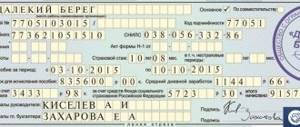Features of conducting summary enforcement proceedings and its significance for practice
Experience shows that collectors sometimes have a very vague idea of summary enforcement proceedings.
This is not surprising, since summary enforcement proceedings are a very specific object and can best be understood when you conduct it yourself. But since not everyone has the opportunity and need to conduct summary enforcement proceedings in person, let’s figure it out together.
First of all, I would like to note that the most common mistake is to understand consolidated enforcement proceedings as some new enforcement proceedings that arise instead of the enforcement proceedings combined into it. From this error, demands appear in complaints: “end summary enforcement proceedings,” etc.
In fact, consolidated enforcement proceedings are not a new single enforcement proceedings. In consolidated enforcement proceedings, consolidated enforcement proceedings still remain independent - they can independently be completed, terminated, suspended if there are legal grounds.
New enforcement proceedings are added to the consolidated enforcement proceedings; enforcement proceedings are excluded from the consolidated enforcement proceedings in the event of their completion or termination.
If, for example, in some independent enforcement proceeding the claimant revokes the writ of execution, then this enforcement proceeding ends and nothing happens to the consolidated enforcement proceeding; no separate special resolutions are issued.
The situation is more complicated when the actions are disputed and the complainant asks to suspend the summary enforcement proceedings. Here a lot depends on the specific factual circumstances of the case. If the seizure of property in favor of all claimants is contested, then the entire summary enforcement proceeding may be suspended. If something related to a specific enforcement proceeding is disputed (for example, the legality of issuing a writ of execution, offsetting similar counterclaims between the debtor and the claimant), then the suspension of the entire consolidated enforcement proceeding will violate the rights of other claimants to receive the award from the debtor.
In this case, specific enforcement proceedings must be suspended, within the framework of which certain procedural actions are being challenged. Moreover, enforcement proceedings can also be suspended either in full or in part (for example, in terms of transferring seized property for sale, the valuation of which is disputed). The suspension of enforcement proceedings in whole or in part is provided for in Articles 39 and 40 of the Law on Enforcement Proceedings.
Article 102. Procedure for collecting alimony and arrears on alimony obligations
Commentary on Article 102
1. Since the collection of alimony is carried out over a long period of time, situations are possible when the minimum subsistence level established by law increases. In this case, the bailiff and the persons paying the debtor wages, pensions, scholarships and other periodic payments make indexation of alimony <1>, collected in a fixed amount of money, in proportion to the increase in the legal minimum subsistence level for the corresponding socio-demographic group of the population, established in the corresponding subject of the Russian Federation at the place of residence of the person receiving alimony, in the absence of monetary amounts of the specified amount in the corresponding subject of the Russian Federation in proportion to the increase in the cost of living established for the corresponding socio-demographic group of the population as a whole in the Russian Federation <2>. On such indexation, persons paying periodic payments to a debtor-citizen are obliged to issue an order (instruction), and the bailiff is obliged to issue a resolution. ——————————— <1> When indexing alimony, the bailiff must check a number of circumstances. Firstly, it is necessary to establish the cost of living at the place of residence of the person receiving alimony from the date of the last increase in the cost of living. Secondly, the bailiff determines what number of subsistence minimums is a multiple of the amount of alimony collected in a fixed sum of money. The resulting multiple is multiplied by the cost of living at the time of calculation (clause 5.2 of the Methodological recommendations on the procedure for fulfilling the requirements of enforcement documents on the collection of alimony, approved by the FSSP of Russia on June 19, 2012 N 01-16). <2> The cost of living per capita and for the main socio-demographic groups of the population as a whole in the Russian Federation and its constituent entities is determined quarterly on the basis of the consumer basket and data from the federal executive body for statistics on the level of consumer prices for food products and indices of such prices, the level of consumer prices for non-food goods and services and the level of expenses for mandatory payments and fees. The procedure for calculating the cost of living per capita and for the main socio-demographic groups of the population in the Russian Federation as a whole is established by the Government of the Russian Federation. The cost of living per capita and for the main socio-demographic groups of the population in the Russian Federation as a whole is established by the Government of the Russian Federation, in the constituent entities of the Russian Federation - in the manner established by the laws of these constituent entities (Article 4 of the Federal Law of October 24, 1997 N 134-FZ “On the cost of living in the Russian Federation” (as amended on December 3, 2012)).
The Constitutional Court of the Russian Federation explained that indexation is a guarantee of ensuring the rights of the child. At the same time, the use of the subsistence level for indexing is aimed at ensuring a balance of interests of minor children and their parents within the framework of alimony relations, at maintaining the required standard of living for both the recipient and the payer of alimony <1>. ——————————— <1> See in more detail the Definitions of the Constitutional Court of the Russian Federation of March 20, 2014 N 634-O, of June 6, 2021 N 1417-O.
Indexation is possible only if alimony is collected in a fixed amount of money, i.e. for alimony obligations of spouses and former spouses (Article 91 of the Family Code), other family members (for example, grandparents for the maintenance of grandchildren under Part 2 of Article 98 of the Family Code). You should also pay attention to the fact that the law provides for indexation only in the event of an increase in the size of the legal subsistence minimum, thus, in the event of a decrease in its value, indexation should not be carried out. If we talk about alimony collected from minor children, then in accordance with Art. Art. 80, 81 SK, the amount is determined by the agreement of the parents on the payment of alimony or, in its absence, in court according to the general rule in shares of the earnings and other income of the parents. At the same time, Art. 83 of the Family Code provides for the possibility of collecting alimony for the maintenance of minor children in a fixed amount in the absence of an agreement between the parents on the payment of alimony, if: 1) the parent obligated to pay alimony has irregular, fluctuating earnings and (or) other income; 2) this parent receives earnings and (or) other income in whole or in part in kind or in foreign currency; 3) the parent has no earnings and (or) other income; 4) collection of alimony in proportion to the earnings and (or) other income of the parent is impossible, difficult or significantly violates the interests of one of the parties. The amount of a fixed sum of money is determined by the court based on the maximum possible preservation of the previous level of support for the child, taking into account the financial and marital status of the parties and other noteworthy circumstances. 2. Part 2 of the commented article establishes the procedure for determining the amount of alimony debt. If alimony is not paid on time by the debtor, arrears may arise. According to Art. 113 of the Family Code, collection of alimony for the past period on the basis of an agreement on the payment of alimony or on the basis of a writ of execution is carried out within the three-year period preceding the presentation of the writ of execution for collection. However, if alimony was not withheld due to the fault of the person obligated to pay it, alimony is collected for the entire period of the debt. The bailiff, by his decision, determines the amount of alimony debt based on the amount of alimony established by a judicial act or an agreement on its payment. The bailiff's decision to determine the alimony debt can be appealed by any of the parties who does not agree with the amount of the debt (Part 5 of Article 113 of the Family Code). In this case, the party that does not agree with the amount of debt established by the bailiff also has the right to protect its rights in the manner provided for in Part 4 of this article <1>. ——————————— <1> See: Determination of the RF Armed Forces of May 20, 2015 N 24-KG15-2.
3. The amount of debt for alimony paid for minor children in shares of the debtor’s earnings is determined based on the earnings and other income of the debtor for the period during which alimony was not collected. If the debtor did not work during this period or the bailiff was not provided with documents on his income for this period, then the alimony debt is determined based on the average salary in the Russian Federation <1> at the time of debt collection, i.e. on the date of actual repayment of the debt by the debtor. ——————————— <1> If necessary, up-to-date information can be obtained in information and legal systems or on the official website of Rosstat (clause 5.1 of the Methodological recommendations on the procedure for fulfilling the requirements of executive documents on the collection of alimony, approved by the FSSP Russia June 19, 2012 N 01-16).
4. According to Part 4 of Art. 113 of the Family Code, if the determination of alimony debt, made in the order of the bailiff, significantly violates the interests of one of the parties to the enforcement proceedings, the party whose interests are violated has the right to apply to the court with a claim to determine the amount of the debt. The court may determine the debt in a fixed amount of money based on the financial and marital status of the parties and other noteworthy circumstances. According to Art. 114 of the Family Code, when paying alimony by agreement of the parties (with the exception of alimony for the maintenance of minor children), by mutual agreement of the parties, the debtor may be released from paying the debt or its amount may be reduced. The debtor also has the right to apply to the court for release in whole or in part from paying arrears of alimony. In this case, the court has the right to satisfy the requirements if it finds that the failure to pay alimony occurred due to the debtor’s illness or other valid reasons and his financial and family situation does not make it possible to pay off the resulting alimony debt. 5. Since alimony is a periodic payment collected from the debtor, during the entire period of alimony collection it is possible that debt may arise repeatedly. A kind of penalty for non-payment of alimony is the collection of an enforcement fee from the debtor, which is calculated and collected from the amount of each debt separately. 6. The legislation of the Russian Federation provides for measures of liability for a debtor who evades payment of alimony: 1) according to Art. 115 of the Code, when a debt arises through the fault of the debtor, he pays the recipient of alimony a penalty in the amount of 0.1% of the amount of unpaid alimony for each day of delay. The recipient of alimony also has the right to recover from the debtor all losses caused by the delay in fulfilling alimony obligations to the extent not covered by the penalty <1>; ——————————— <1> See in more detail: Resolution of the Constitutional Court of the Russian Federation of October 6, 2021 N 23-P.
2) failure by a parent to pay, without good reason, in violation of a court decision or a notarized agreement, funds for the maintenance of minor children or disabled children who have reached the age of 18, within two or more months from the date of initiation of enforcement proceedings (if such actions do not contain a criminal offense ) entails punishment in the form of compulsory work for a period of up to 150 hours or administrative arrest for a period of 10 to 15 days or the imposition of an administrative fine on persons against whom compulsory work or administrative arrest cannot be applied in the amount of 20 thousand rubles. (Part 1 of Article 5.35.1 of the Administrative Code) <1>; ——————————— <1> From November 10, 2021, the right to forcibly transfer an individual for the purpose of drawing up a protocol on an administrative offense if it is impossible to draw it up at the place where the administrative offense was detected, as well as the right to administrative detention for administrative offenses , provided for in Art. 5.35.1 Code of Administrative Offenses, provided to officials of the FSSP of Russia.
3) in case of malicious evasion of alimony payment, the debtor may be brought to criminal liability in accordance with Art. 157 of the Criminal Code.
Why are they combined into consolidated enforcement proceedings?
The merger is carried out for the following purposes:
(1) procedural economy;
(2) The possibility of foreclosure on property for the total amount of debt in all enforcement proceedings against one debtor or in favor of one recoverer from several debtors;
(3) distribution of collected amounts among collectors of different priority for satisfying claims (Article 111 of the Law on Enforcement Proceedings).
Let's look at each goal separately.
Procedural economy
In the case of combining enforcement proceedings into a consolidated one, there is no need in the descriptive part of the procedural documents (acts, resolutions, etc.) to list all enforcement proceedings and the amount of collection for each enforcement proceeding. In each procedural document, a reference is made to the consolidated enforcement proceedings No. 12525/45/-SD.
In other words, the essence of consolidated enforcement proceedings is that when collecting from one debtor in favor of several collectors, the bailiff takes actions not for each enforcement proceeding separately, but for the consolidated enforcement proceedings as a whole.
Distribution of collected amounts between collectors of different priority for satisfying claims
Article 111 of the Law on Enforcement Proceedings establishes a strict order of satisfaction of claims to collectors in the event that the amount collected from the debtor is not enough to satisfy all claims of the collectors.
First of all, claims for the collection of alimony are repaid, second - wages, third - taxes and extra-budgetary funds, fourth - all other claimants (for more details, see the article of the law).
If in the consolidated enforcement proceedings there are collectors of the same priority, for example the fourth, then the distribution of the collected amount will be made in proportion to the amount of the debt. For example, the debtor has three claimants, the first claimant has a claim of 1,000 rubles, the second has a claim of 2,000 rubles, and the third has a claim of 7,000 rubles. Total debt is 10,000 rubles. 100 rubles were collected from the debtor. The first claimant will receive 10 rubles, the second 20 rubles, the third 70 rubles.
Consolidated enforcement proceedings are not very popular among professional collectors (collectors), since they actively help the bailiff in searching for and seizing the debtor’s property, and it turns out that they work for virtually all collectors.
Features of familiarization with the materials of consolidated enforcement proceedings
In practice, there are cases where the claimant is refused to familiarize himself with all the materials of the consolidated enforcement proceedings. At the same time, bailiffs refer to the confidentiality of data in other enforcement proceedings, where the claimant is not a party to the enforcement proceedings.
The issue is very controversial, since in accordance with Article 50 of the Law on Enforcement Proceedings, only a party has the right to get acquainted with the materials of a particular enforcement proceeding. The law says nothing about summary enforcement proceedings.
It seems that the claimant must unconditionally be given access to all documents of the consolidated enforcement proceedings that affect his rights and legitimate interests.
For example, this will be an act of inventory and seizure of property under consolidated enforcement proceedings, reports on the assessment of seized property, etc. As for the personal data of individuals of collectors, the provision of such information to the collector in summary enforcement proceedings may be refused, since this information does not in any way affect his rights and legitimate interests.
Judicial practice[1] holds a slightly different opinion, from which it follows that the claimant can familiarize himself with the materials of the entire consolidated enforcement proceeding without any restrictions. The cassation court pointed out that the absence in the Law on Enforcement Proceedings of a direct indication of the possibility of limiting the rights of the claimant to familiarize himself with the materials of the enforcement proceedings in full, regardless of whether the enforcement proceedings are consolidated or not, the appellate court came to the conclusion that the claimant has the right to familiarize yourself with all materials of enforcement proceedings. At the same time, the bailiff should not duplicate his actions aimed at establishing the debtor’s property and executing enforcement documents combined into consolidated enforcement proceedings [2].
More about indexing
The indexation of alimony itself is provided for by the Family Code. Its purpose is to protect alimony payments from the process of inflation. Another purpose of indexation is to prevent repeated court appeals to recalculate the amount of alimony if they are paid in a fixed amount. In this case, indexation is carried out both when alimony is withheld in accordance with a court order, and when a voluntary agreement is concluded. According to new legislative norms, such indexation can be carried out not only by a bailiff, but also by the accounting department or administration of the employer of the alimony payer.
It is worth emphasizing that the practice of collecting alimony in a fixed amount occurs when we are talking about payments to a spouse or elderly parents (disabled or incapacitated). Sometimes it is used to collect funds for the maintenance of children who have not reached the age of majority:
- with irregular income of the alimony payer;
- in the case when the alimony payer receives part of the income or all of it in foreign currency or its ruble equivalent;
- if the alimony payer has income or earnings.
Also, such a practice will be applied if it is difficult or impossible to collect funds for the maintenance of children in a shared ratio (as a percentage of income or earnings) or such a deduction violates the interests of the parties.
The problem of plurality of bailiffs
A common problem in the bailiff service is the conduct of enforcement proceedings against the same debtor by different bailiffs. Enforcement proceedings are not combined into consolidated enforcement proceedings for various objective and subjective reasons.
For example, the debtor previously lived at the same address and subsequently moved. As a result, enforcement proceedings are being carried out in different departments of bailiffs. In addition, enforcement proceedings can be initiated at the location of the debtor’s property (Part 1 of Article 33 of the Law on Enforcement Proceedings). Here, collectors can actively influence the situation by sending petitions to the chief bailiff to merge enforcement proceedings into consolidated enforcement proceedings. However, this is not always beneficial to the claimant (for more details, see above)
What documents need to be attached?
The following must be attached to the application for the resumption of enforcement proceedings for alimony:
- The document on the basis of which payments were previously withheld.
- The applicant's civil passport.
- Child's birth certificate.
- Evidence that the debtor is able to pay alimony is a certificate of income, payment documents, bank account statements, and so on.
You can submit copies, but you must have the originals with you.
How the application is reviewed
The application along with the documents is submitted to the territorial branch of the FSSP at the debtor’s place of residence. Within 10 working days, the bailiff must consider the application and make a decision on it. No later than the next day after the decision is made, the applicant must be sent a written notice describing the decision on his appeal.






